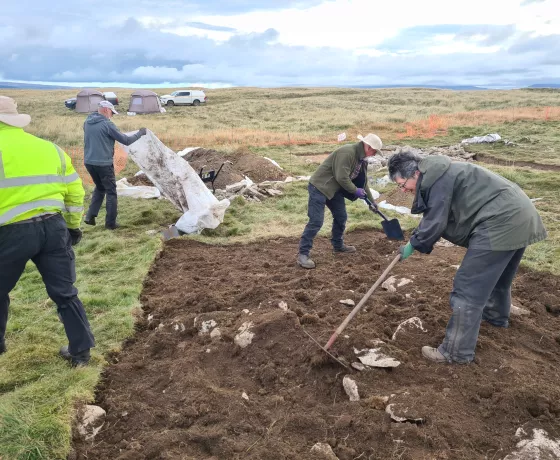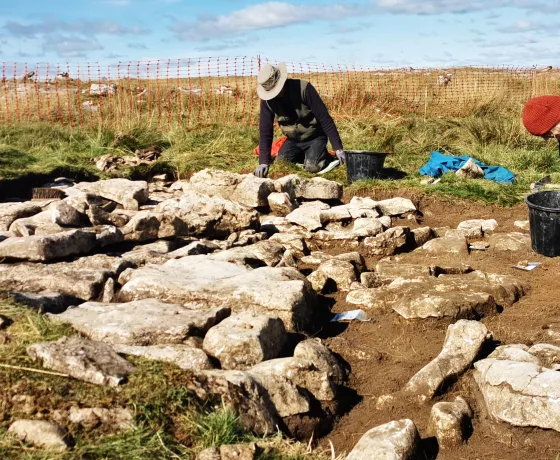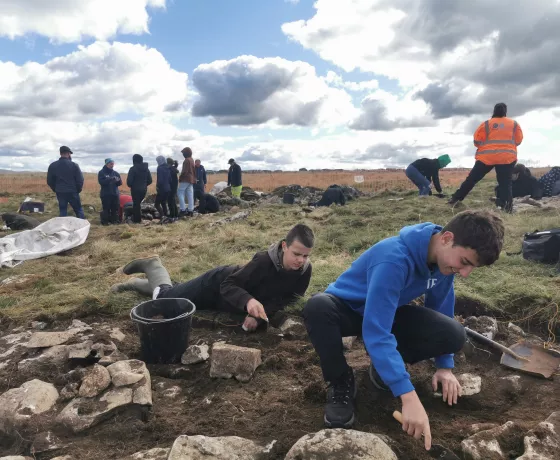Driving down the M6 this morning the mist and cloud was cloaking the mountains looking very moody; however, upon arrival at our meeting point it was clearing to a bright and warm sunny day which lasted right up until we left.
We continued work today on out three trenches around the possible medieval longhouse structure. Trench number 3 over one of the better preserved areas of wall was being recorded by Linda and Richard. They spent the morning meticulously drawing a plan of the wall and a section drawing where they had removed a portion of the wall to see its construction, after this they learnt how to fill in context sheets on which we describe in detail each context number which is what we assign to every event, structure, deposit or cut within a trench. These are very important records because they explain colour, soil descriptions and how the contexts were excavated in a way that can't be seen in photos or drawings. After lunch we backfilled the trench and they went on their way with Andy to the new area of interest survey area 4 to lay out the new trenches.
In trench 1 Perry and Jan were also recording, and sampling a series of natural deposits which were excavated down to a depth of 1m, this is important because it is the deepest level of deposits that we have found whilst excavating so far. In other areas we have found limestone pavement at very shallow depths. This tells us that something different is happening here in terms of erosion and soil deposition, hopefully the environmental samples, once processed, can tell us more about the dates of these events of deposition. In this trench too they worked very hard and backfilled before the end of the day and went with Andy to explore our new trench area.


In trench 2 Tess, Jackie, Unity and James continued to excavate the area of wall where we have a deeper level of stratigraphy then the other section, they excavated to a depth of 0.5m on the interior and exterior of the wall through quite solid clay deposits (they will have achy wrists tomorrow! well done guys!) and found that there is a cut for the wall still extant. This tells us about how the longhouse might have been constructed and it proved to us that in this area at least no internal floor surface had survived. They finished their excavating today and will record it tomorrow before joining the rest of the team in area 4.

All in all a very busy and productive day in Little Asby!
As a post script we have a comment from Mairead about yesterdays pollen coring programme:
An exceptional day’s coring was undertaken at the north end of Sunbiggin Tarn on Tuesday 14th September. Two volunteers, John and James, showed outstanding aptitude for using gouge and Russian coring equipment to probe the subsurface to a depth of 5m, in order to recover soil samples suitable for palaeoenvironmental assessment and radiocarbon dating. An enthusiastic interest in all things mud combined with mechanical know-how, enabled this dynamic duo to make a significant contribution to the community project.
Mairead


Other posts in this collection
Read our latest posts about the Little Asby community excavation.




